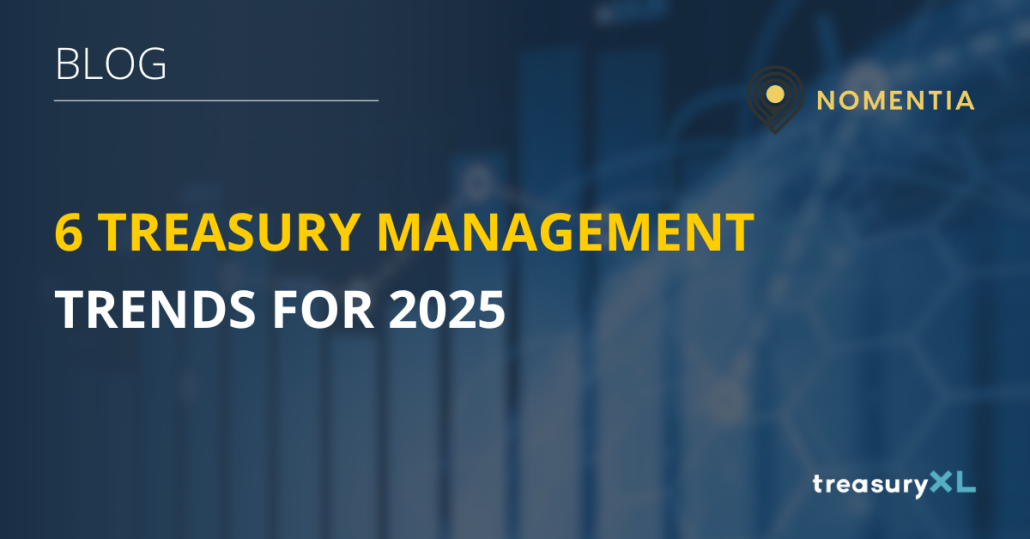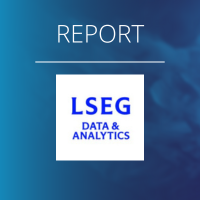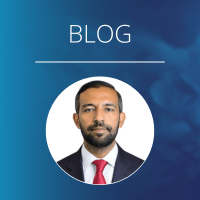1. Liquidity and forecasting: core treasury functions are back in focus
Ongoing economic concerns and geopolitical tensions have brought a renewed focus on core treasury functions such as liquidity management and cash flow forecasting.
For many companies, operating cash flows have become more erratic and difficult to predict, while both banks and the capital markets have become more cautious about funding. Liquidity can no longer be taken for granted: a lesson that many companies have had to learn the hard way, given the high number of insolvencies in 2024.
Robust liquidity planning is essential to ensure that, despite this difficult starting point, cash is always available to respond to unforeseen market changes. It is therefore not surprising that optimising liquidity management and improving cash flow forecasting capabilities are among the two most important priorities for treasurers in the coming year.
In this context, treasurers see the difficulties in consolidating the required data from different sources as the biggest challenge. A scattered database not only leads to a lot of manual work in data consolidation but is also accompanied by a lack of overview of cash flows and incorrect forecasts.
2. Standardisation: The need to unify fragmented systems and processes
In general, fragmented system landscapes are seen as a common challenge among many organisations, and streamlining them is becoming increasingly important. The more disparate solutions a business uses, the more difficult it is to consolidate data and ensure interaction between different systems. When data is available in a variety of formats and cannot be exchanged between systems, it is difficult to automate processes.
In addition, the lack of fluidity and consistency harms the quality of future cash flow forecasts. Not just that – the mosaic of systems is also more prone to errors and fraud due to manual data entry and the need for intermediate storage. Particularly regarding payment transactions, centralising payments in a payment hub not only provides greater visibility of payment processing but also enables the adoption of centralised approval processes as well as other anti-fraud measures.
To remain competitive, many companies will therefore have to undergo a “spring clean” in the coming year and standardise their systems and processes. In this context, it is also worth mentioning the standardisation of payment transactions through the ISO conversion, which will reach its migration deadline in November 2025. This means that by that date all financial institutions must have migrated to the new format and the old MT messages will no longer be supported.
Although banks are not yet requiring their customers to adopt the ISO 20022 format, and banks and payment solution providers will continue to provide the conversion of old formats as a service, there may come a time when the ISO 20022 mandate is extended to commonly used formats and migration becomes necessary. However, this change should not be seen as a mere regulatory requirement. By migrating early, organisations can future-proof their systems, make them globally compatible and gain a competitive advantage. They can benefit from more efficient processing of cross-border transactions and the advantages of uniformly classified data formats when it comes to automating daily processes.
3. Real-time treasury: APIs are becoming even more important
A topic that comes up again and again and will continue to play a central role for finance executives in the coming year is real-time treasury.
In times of economic uncertainty, access to real-time information is becoming increasingly important and API connections are growing in significance. APIs are interfaces that enable secure, automated, real-time data exchange between systems. They are most commonly used to exchange payment data between bank portals and treasury management systems, but this is often still a challenge as not all bank APIs use the same protocols and there is little standardisation.
In addition to the exchange between banks and TMS, APIs are also used for the flow of data between internal systems such as ERP, accounting software and TMS to enable seamless integration in real-time. Access to relevant information in real-time – such as cash flows and liquidity – is crucial in an unstable market environment. The visibility of real-time data strengthens the strategic function of treasury teams by enabling timely, informed decisions based on current data. In liquidity planning, real-time visibility of cash flows helps ensure more accurate planning and early detection of liquidity risks.
Finally, in fraud prevention, real-time data can lead to faster detection and prevention of fraudulent activities. We can therefore expect these advanced interfaces to become even more important in 2025.
Because the real-time trend is not limited to reporting and liquidity management. APIs also enable payments to be sent and booked in real-time. So far, the use of instant payments has been limited and more expensive than traditional payment methods, which is why only a few companies are currently using them. However, the use of instant payments is expected to increase in 2025. From January 2025, all financial service providers in the euro area will be obliged to support the receipt of instant payments and, from October 2025, the sending of instant payments, at the same charges as for traditional SEPA credit transfers.
4. Artificial Intelligence: Will AI still be a buzzword in 2025?
An article on treasury trends in 2025 cannot get by without mentioning AI. Artificial Intelligence is omnipresent in treasury as well, with use cases primarily in cash flow forecasting, cash positioning and FX management. Cash flow forecasting, in particular, is an area where many companies are looking to improve, and where algorithms can efficiently support the calculation of more accurate forecasts as well as help to achieve a higher planning frequency. However, only a fraction of companies – and among them only large corporations – are currently reaping the benefits of mature AI capabilities.
Many companies are still in the process of identifying use cases or defining solutions, and an even larger proportion have not yet addressed the topic at all. Although an increasing number of TMS providers are offering AI-based solutions, many companies still lack the reliable data sources and infrastructure to take advantage of these services. For example, AI-based liquidity planning requires a database of classified cash flow data going back at least three years. To benefit from the advantages of this technology, many companies must therefore first address their fragmented system landscape and standardise their treasury processes in order to create the database required for an AI project.
5. Fraud Prevention: Increasing payment fraud demands mature measures
While artificial intelligence can increase efficiency, accuracy and security in treasury, criminals are also taking advantage of the technology. Fraud tactics are becoming more sophisticated, with fraudsters using AI to identify security vulnerabilities in systems, create synthetic identities and refine their social engineering attacks through deceptively realistic phishing emails and deepfake CEO calls. Despite headlines about fraud and cyber-attacks, many organisations still fail to take preventative security measures. In addition to ongoing employee training, companies should also review their payment processes for weaknesses in the coming year. Standardised approval processes, the four-eyes principle and automated, rule-based payment process controls provide an additional layer of security should an attack occur despite trained personnel. In particular, where payments are processed in real-time – that is, within ten seconds of the payment order being placed – additional pre-processing security checks are essential.
6. CBDCs: further progress towards digital central bank currencies is to be expected
Another topic that is currently being discussed a lot is the development of CBDCs (Central Bank Digital Currencies). While interest in cryptocurrencies has waned among treasurers, the development of central bank digital currencies is being followed with interest. Unlike cryptocurrencies, which are decentralised and unregulated, CBDCs are centralised and legally recognised. Central banks around the world are working on the development of digital currencies, including the European Central Bank. Although the digital euro is initially aimed primarily at individuals, there are potential implications for corporate payments. Assuming that both parties to a payment use CBDCs through directly managed accounts at the respective central bank, this means that the payment could be transmitted in real-time, in the same digital currency and without an intermediary. This would reduce transaction times and costs by eliminating banks as intermediaries and foreign currency conversion.
However, it is not yet clear to what extent businesses will be able to use CBDCs for themselves, as there may initially be a cap on payment amounts. Since November 2023, the European Central Bank has been in a two-year preparatory phase for the digital euro, during which the rules for the digital euro, the possibilities for an offline function, and the technical aspects and providers of the infrastructure are being developed. Once this second phase of the project and the legislative process have been completed by the end of 2025, the Governing Council will decide on the further course of the project.
Conclusion: Time for a spring clean
There is no shortage of innovation and progress in treasury. APIs, instant payments, digital currencies and artificial intelligence are all on the rise, bringing greater efficiency, transparency and automation to treasury processes. However, in the day-to-day operations of treasury, there still seems to be a gap between the current status quo and these opportunities for innovation. Outdated and disparate manual processes prevent the smooth exchange of data between systems and business units, which is the basis for further progress. To close this gap, treasury teams need to standardise their current working practices and create unified processes, systems and structures. In practice, this means cleaning up: streamlining the system landscape, centralising payments, updating master data and reducing the number of bank connections. This will create a unified database across departments and companies, providing a solid foundation for the future.












